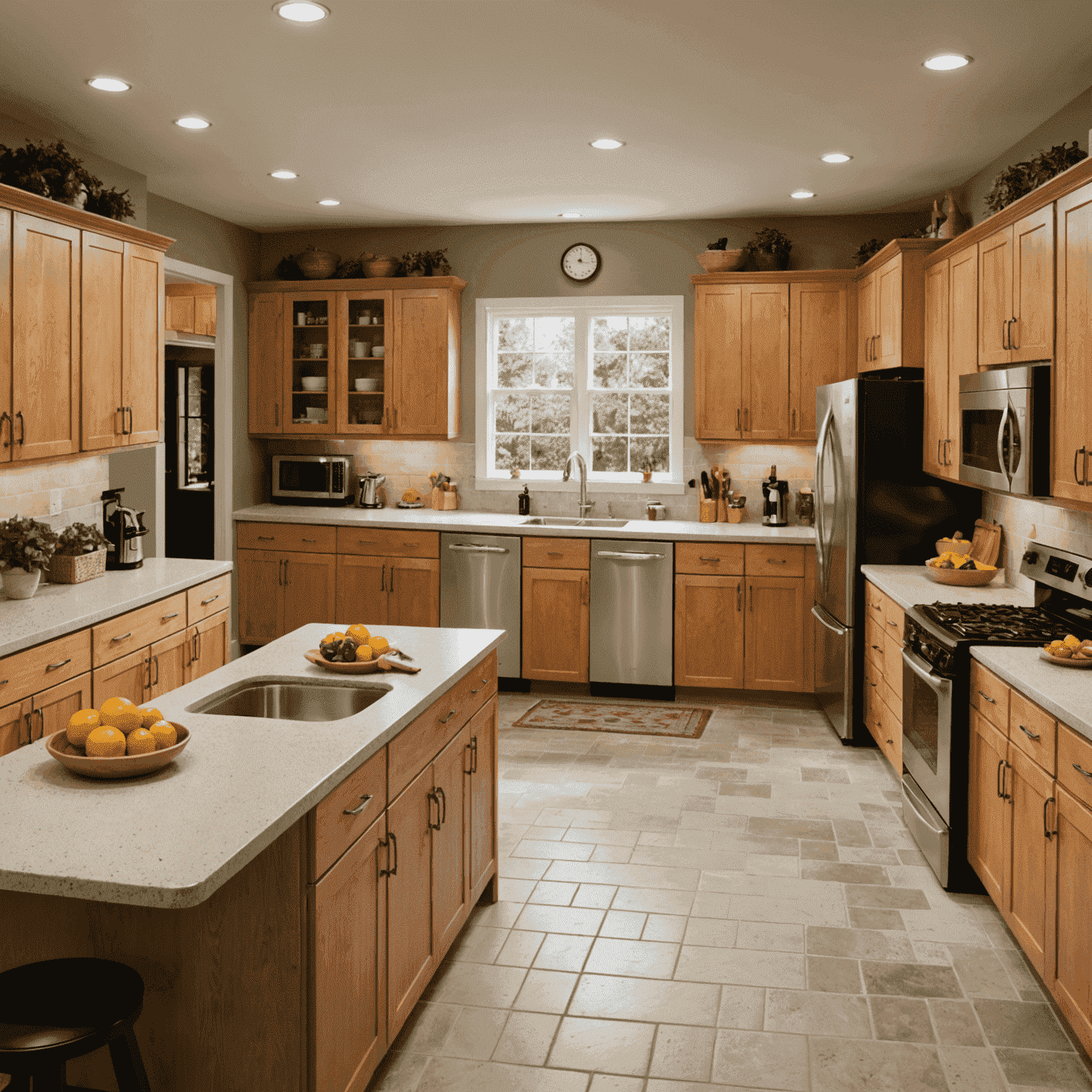Exocrine-Friendly Kitchen Layouts

For individuals living with exocrine pancreatic insufficiency (EPI), the kitchen can be a challenging space. However, with thoughtful design and organization, it's possible to create a kitchen that not only accommodates but enhances the cooking experience for those managing digestive health conditions.
Key Elements of an Exocrine-Friendly Kitchen
- Accessible Storage: Install pull-out drawers and lazy Susans in lower cabinets to make items easily reachable without bending or straining.
- Ergonomic Countertop Heights: Consider varying counter heights to accommodate both standing and seated food preparation, reducing fatigue during longer cooking sessions.
- Dedicated Medication Station: Create a specific area for storing and preparing digestive enzymes and other medications, keeping them organized and within easy reach during meal times.
- Efficient Appliance Placement: Position frequently used appliances at comfortable heights and in logical work zones to minimize unnecessary movement.
- Clear Labeling System: Implement a clear and consistent labeling system for ingredients and utensils to reduce stress and save time when preparing meals.

Optimizing Layout for Digestive Wellness
When designing a kitchen layout for someone with EPI, consider the following tips:
- Create a linear workflow from refrigerator to prep area to cooking zone to minimize steps and conserve energy.
- Install a small sink near the cooking area for easy access to water for medication and hydration.
- Incorporate ample counter space near the stove for organizing ingredients and enzyme supplements.
- Choose easy-to-clean surfaces that don't harbor bacteria, supporting overall digestive health.
- Include a comfortable seating area within the kitchen for rest breaks during meal preparation.
Smart Storage Solutions
Effective storage is crucial in an exocrine-friendly kitchen. Consider these ideas:
- Use clear containers for storing ingredients, making it easy to identify contents without opening.
- Implement a color-coding system for different food groups or dietary requirements.
- Install vertical dividers in cabinets to store baking sheets and cutting boards upright for easy access.
- Utilize wall space with magnetic strips for holding metal utensils and freeing up drawer space.
- Incorporate a pull-out pantry system for effortless access to dry goods and supplements.

Technology Integration for Health Management
Modern kitchen design can incorporate technology to assist with managing EPI:
- Install a tablet holder or smart display for easy access to recipes and medication reminders.
- Use smart appliances that can be programmed to accommodate specific dietary needs and cooking times.
- Incorporate a voice-activated assistant for hands-free recipe reading and timer setting.
By implementing these exocrine-friendly kitchen design elements, individuals with EPI can create a space that not only meets their functional needs but also promotes a positive and empowering cooking experience. Remember, a well-designed kitchen is a powerful tool in managing digestive health and maintaining a nutritious diet.